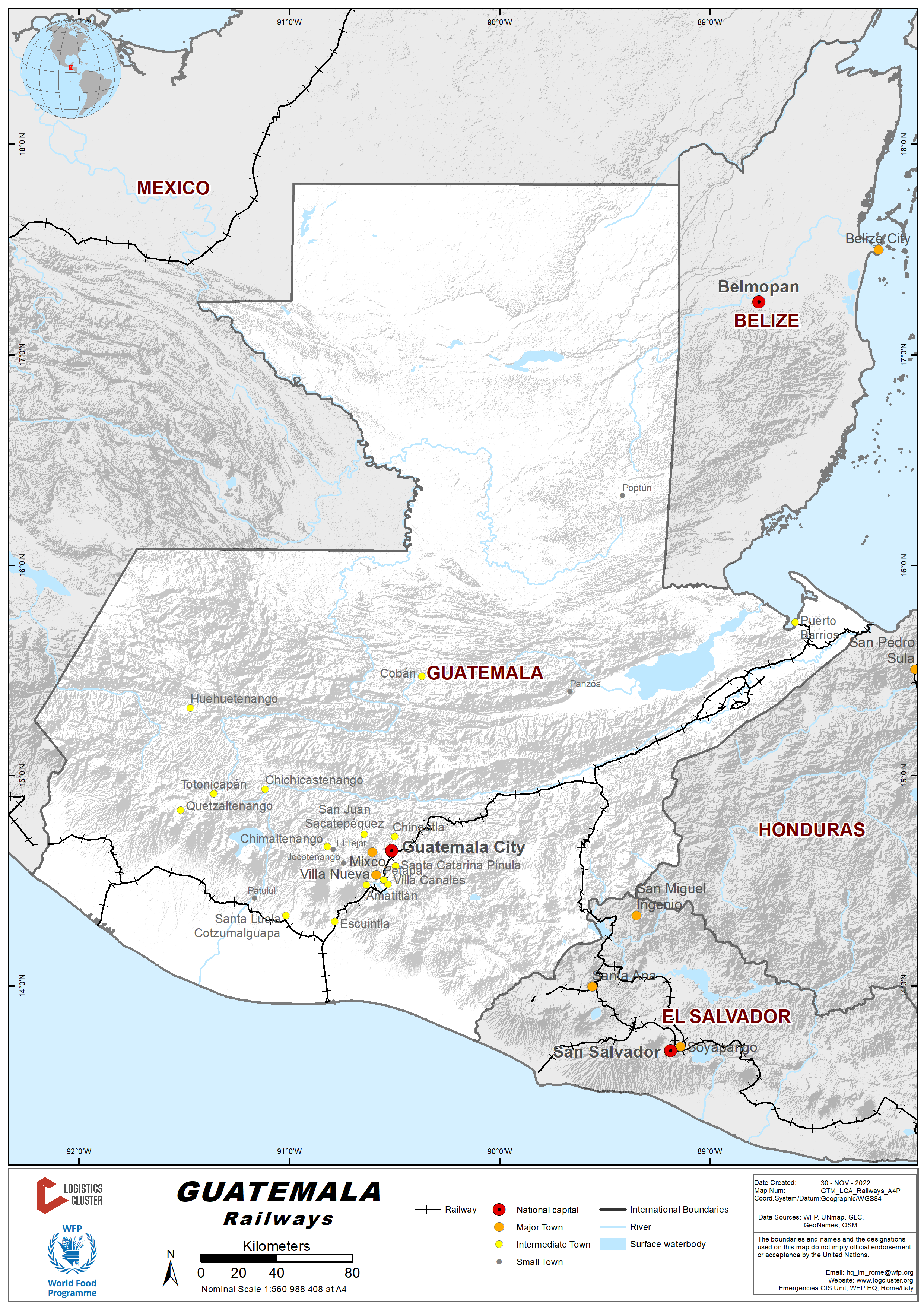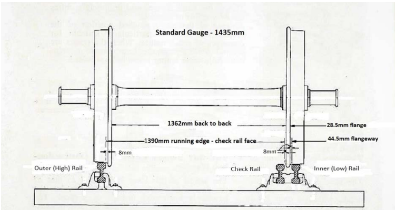
Despite the existence of a railway network, no passenger or freight train currently runs in Guatemala. The body in charge of the railway management (Concession Ferrovías Guatemala - FVG) suspended traffic operations in 2007 after months of dispute with the government of Guatemala and subsequent decline of shipments and increase of operational difficulties. As of 2011, most of the bridges have been dismantled and sold for scrap by thieves, making a potential revival of railways in Guatemala, difficult, as it would cost millions of dollars to rebuild. Ferrovias was re-nationalized in December, 2012.

A contract in between Ferrovías de Guatemala S.A. https://ferrovias.com.gt/# and the Mexican company Remed, S.A. https://www.stellaholdings.com.mx/remed was approved by the Extraordinary Assembly of Ferrovías Shareholders on January 12 of 2021 and signed two days later. With this, the right to rehabilitate, use and operate a first stage, Pacific Division, consisting of 235 kilometres of railway, in standard gauge (it consists in the rehabilitation and construction of the railway line in standard gauge: 1,435 mm**) to provide cargo, passenger and tourism transport services from the Tecún Umán, San Marcos border with Puerto Quetzal , Escuintla. To this is added a 30-kilometre section from Retalhuleu to Puerto Champerico, in accordance with the bidding rules FV-LS-02-2021.
The State of Guatemala owns more than 80% of the shares of Ferrovías, S.A. Remed is committed to invest US$700 million for the development and execution of the project, for a period of 26 years.
Opportunity
Through this project, the aim is to develop corridors that will enhance the economic zones, facilitating the transfer of goods between populated centers to the borders and ports of the country and the growth of trade in Central America.
The commercial purpose of the railway operation is focused on cargo, passenger and tourism transport, land terminal services for consolidation/deconsolidation of merchandise, storage, national and international cargo transit, transport agent service for the processing of objective cargo documentation of national and international trade. It will have a connection to Mexico. Operational tests were carried out on August 2022 between Ciudad Hidalgo, Chiapas, Mexico, and the facilities of the Tecún Umán Railway Station, in the municipality of Ayutla, department of San Marcos. The passage of a freight train with 4 wagons was tested. Although infrastructure such as procedures and permits for the creation of a customs office that allows commercial exchange remains pending.
Constraints
One of the social constraints is that for the operation, thousands of families living along various sections of the railway will have to be evicted and Fegua* https://fegua.gob.gt/ will have to bear the costs of these transfers.
At the national congress level some representatives have recently stated: The "Bicentennial Train" project must be analysed from political, legal and economic perspectives. The objection is that the project should have been called as an international tender and after being awarded, contracted as a public service concession and not as a lease. Legislators affirm that it is a business managed with discretion to favor a Mexican company.
There is uncertainty among some congressmen regarding the royalties to be obtained, real estate that has registration problems and legal barriers, as well as the technical, operational and financial capacity of the Mexican contracted company.
The track that Fegua has along its route is a narrow track 91.4 centimeters (36 inches)
(*) Fegua and Ferrovías de Guatemala have a 50-year usufruct contract that expires in 2047, known as Contract 402. The Remed S.A. contract will have a duration of 26 years, which is the precise time to complete contract 402 -the original contract between Ferrovías and Ferrocarriles de Guatemala (Fegua) for 50 years- but it is established that Ferrovías can request an extension to Fegua. Fegua’s main objective is to restore, revitalize and revalue the railway heritage, and implement and execute a maintenance plan for the railway.

(**)A standard-gauge railway is a railway with a track gauge of 1,435 mm (4 ft 8+1⁄2 in). It is the most widely used track gauge around the world, with approximately 55% of the lines in the world using. The distance between the inside edges of the rails is defined to be 1435 mm except in the United States and on some heritage British lines, where it is defined in U.S. customary/Imperial units as exactly "four feet eight and one half inches" which is equivalent to 1435.1 mm.
For more information on government contact details, please see the following link: 4.1 Government Contact List.


